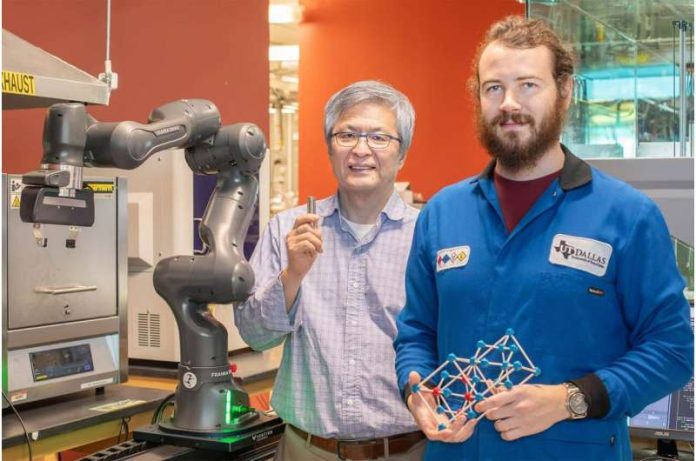
Lithium nickel oxide (LiNiO₂) has shown great potential for powering the next generation of lithium-ion batteries, promising longer battery life for smartphones, electric vehicles, and other devices. However, despite its advantages, the material has struggled to gain widespread use because it breaks down over time, reducing battery performance after repeated charging.
Now, researchers at the University of Texas at Dallas (UTD) have identified the reason behind this degradation and proposed a possible fix. Their findings, published in Advanced Energy Materials, could open the door to making LiNiO₂batteries commercially viable.
Why LiNiO₂ Batteries Fail
To understand why LiNiO₂ batteries degrade, the UTD team used computational modeling to analyze the material’s chemical reactions at the atomic level. In lithium-ion batteries, energy is generated by the movement of lithium ionsbetween two electrodes:
- The cathode (positive electrode), which typically contains materials like cobalt.
- The anode (negative electrode), usually made of carbon graphite.
During charging and discharging, lithium ions flow between the cathode and anode through an electrolyte, creating an electrochemical reaction that produces electricity.
The researchers discovered that in LiNiO₂ batteries, oxygen atoms in the cathode undergo a chemical reaction that makes the material unstable, causing cracks to form. Over time, these cracks weaken the battery’s ability to store and release energy efficiently.
A Solution: Strengthening the Cathode with “Pillars”
To prevent this breakdown, the team developed a theoretical solution: introducing positively charged ions (cations) into the cathode to create “pillars” that reinforce the material’s structure.
These cations change the material’s properties in a way that stabilizes the cathode, preventing it from cracking and extending the battery’s lifespan.
The next step is to manufacture and test these improved LiNiO₂ cathodes.
From Lab to Commercialization
Leading this effort is Matthew Bergschneider, a doctoral student in materials science and the study’s first author. Bergschneider is setting up a robotics-based laboratory to manufacture small-scale prototypes of the new battery design.
Initially, the team will produce small amounts of the enhanced LiNiO₂ cathodes to refine the process. Once optimized, they plan to scale up production and manufacture hundreds of batteries per week at UTD’s BEACONS facility, a research program focused on advancing battery technology and manufacturing.
“We’ll make a small amount at first and refine the process,” Bergschneider said. “Then, we will scale up the material synthesis and manufacture hundreds of batteries per week. These are all stepping stones to commercialization.”
The Future of LiNiO₂ Batteries
If successful, this breakthrough could make lithium nickel oxide a viable alternative to cobalt-based batteries, reducing reliance on cobalt—a scarce and expensive material. The new technology could lead to longer-lasting, more sustainable lithium-ion batteries, benefiting industries from consumer electronics to electric vehicles.
Now that scientists have identified the cause of LiNiO₂ degradation and proposed a fix, the next challenge is proving that these modified cathodes can perform reliably at scale. If the UTD team succeeds, LiNiO₂ batteries may finally overcome their biggest hurdle—unlocking a new era of energy storage technology.
The research findings can be found in Advanced Energy Materials.
Copyright © 2025 Knowridge Science Report. All rights reserved.



